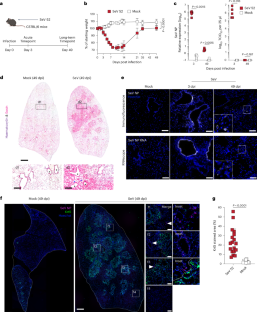2024-10-02 ワシントン大学セントルイス校
<関連情報>
- https://source.washu.edu/2024/10/new-genomic-surveillance-tools-could-help-efforts-to-eliminate-damaging-parasitic-infections/
- https://www.thelancet.com/journals/ebiom/article/PIIS2352-3964(24)00223-8/fulltext
リンパ系フィラリア症における再感染と再増悪の区別 Distinguishing recrudescence from reinfection in lymphatic filariasis
Young-Jun Choi∙ Kerstin Fischer∙ Aboulaye Méité∙ Benjamin G. Koudou∙ Peter U. Fischer∙ Makedonka Mitreva
eBioMedicine Published: June 6, 2024
DOI:https://doi.org/10.1016/j.ebiom.2024.105188

Summary
Background
The Global Program to Eliminate Lymphatic Filariasis (GPELF) is the largest public health program based on mass drug administration (MDA). Despite decades of MDA, ongoing transmission in some countries remains a challenge. To optimise interventions, it is critical to differentiate between recrudescence and new infections. Since adult filariae are inaccessible in humans, deriving a method that relies on the offspring microfilariae (mf) is necessary.
Methods
We developed a genome amplification and kinship analysis-based approach using Brugia malayi samples from gerbils, and applied it to analyse Wuchereria bancrofti mf from humans in Côte d’Ivoire. We examined the pre-treatment genetic diversity in 269 mf collected from 18 participants, and further analysed 1-year post-treatment samples of 74 mf from 4 participants. Hemizygosity of the male X-chromosome allowed for direct inference of haplotypes, facilitating robust maternal parentage inference. To enrich parasite DNA from samples contaminated with host DNA, a whole-exome capture panel was created for W. bancrofti.
Findings
By reconstructing and temporally tracking sibling relationships across pre- and post-treatment samples, we differentiated between new and established maternal families, suggesting reinfection in one participant and recrudescence in three participants. The estimated number of reproductively active adult females ranged between 3 and 11 in the studied participants. Population structure analysis revealed genetically distinct parasites in Côte d’Ivoire compared to samples from other countries. Exome capture identified protein-coding variants with ∼95% genotype concordance rate.
Interpretation
We have generated resources to facilitate the development of molecular genetic tools that can estimate adult worm burdens and monitor parasite populations, thus providing essential information for the successful implementation of GPELF.
Funding
This work was financially supported by the Bill and Melinda Gates Foundation (https://www.gatesfoundation.org) under grant OPP1201530 (Co-PIs PUF & Gary J. Weil). B. malayi parasite material was generated with support of the Foundation for Barnes Jewish Hospital (PUF). In addition, the development of computational methods was supported by the National Institutes of Health under grants AI144161 (MM) and AI146353 (MM). The funders had no role in the study design, data collection and analysis, decision to publish, or preparation of the manuscript.


